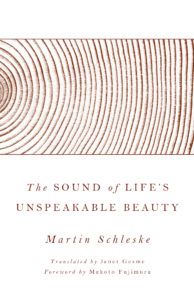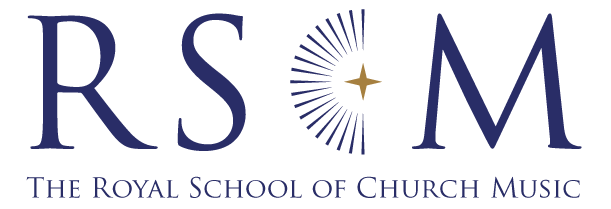Reviews of printed music
CHORAL MUSIC
KEY
E Easy
M Medium
D Difficult
UPPER-VOICE ADVENT/CHRISTMAS
ADVENT TO CHRISTMAS [E]
Noel Rawsthorne
SS and keyboard
Banks Music Publications ECS605 £1.75
HOW FAR IS IT TO BETHLEHEM [E/M]
Richard Allain
SA and keyboard
Novello NOV297286 £2.75
JESUS CHRIST THE APPLE TREE [E/M]
Richard Allain
SS and piano
Novello NOV297435 £2.75
Noel Rawsthorne has set for unison voices an Advent poem by Liverpudlian Peter Kennerley. Its verses are introduced, linked and concluded by easily recognizable quotes from six well-known carols sung by a separate, spatially distant, unison choir. It is an idea that works well and should be popular with audiences, as well as easy to sing.
Richard Allain’s two carols are settings of texts that are well known from earlier settings (David Willcocks and Elizabeth Poston, respectively), to which he gives simpler, upper-voice treatments, with plenty of unison and some two-part singing. Both are thoughtful and gentle (despite the ‘With Spirit’ instruction for Jesus Christ the apple tree) and would sound good with young choirs as reflective items in a carol concert or service.
PUER NATUS EST [M]
Phillip Faber
SSAA (and optional piano)
Wilhelm Hansen WH33171
To the list of distinguished Scandinavian choral musicians can now be added Danish choral director and composer Phillip Faber. Puer natus est combines a four-part setting of the 13th-century Latin Christmas hymn ‘Puer natus in Bethlehem’ with unison voices (perhaps a children’s choir) singing ‘A babe is born in Bethlehem’. The choral writing is gorgeous. An optional piano part, mostly with a flow of quavers, could help intonation and momentum, but with a confident upper-voice choir I would prefer to hear it a cappella and appreciate the choral sound. An SATB and piano version (WH33172) is also available.
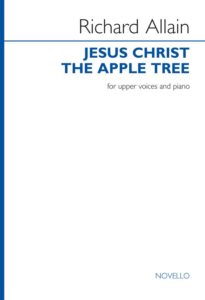
SLEEP, MY LITTLE JESUS [E]
Edmund Jolliffe
SA and keyboard
Banks Music Publications GCL040 £1.95
TOMORROW SHALL BE MY DANCING DAY [M]
Thomas Hyde
SSA and organ
Cadenza CAZTHTDD01 £2.99
WE SAW THEE [M/D]
Raymond Yiu
SSA
Cadenza CAZRYWST01 £2.25
Edmund Jolliffe’s setting of Sleep, my little Jesus sees the new-born child through the eyes of his mother, with brief references to herself (‘Will they call me blessed?’) and to the Cross (‘Shall I stand and weep?’). The focused simplicity of the words is accompanied by expressive music that has both charm and warmth. A move up a minor third, and back to the home key 16 bars later, feels natural and effective.
Thomas Hyde’s bright and breezy Tomorrow shall be my dancing day, published by Cadenza in 2009 and now revised, dances its way through the text in 6/8 metre, with enough 5/8 bars to trip up the unwary. A well-prepared, confident performance would be an audience winner.
We saw thee, by Hong Kong-born Raymond Yiu, is a serious exploration of two stanzas from Richard Crashaw’s poem In the Holy Nativity of out Lord. Distinctive rhythmic motifs and interval patterns provide reassuring aural markers as the piece celebrates Jesus, ‘whose all-embracing birth Lifts earth to heaven, stoops heav’n to earth.’
We saw thee, by Hong Kong-born Raymond Yiu, is a serious exploration of two stanzas from Richard Crashaw’s poem In the Holy Nativity of our Lord. Distinctive rhythmic motifs and interval patterns provide reassuring aural markers as the piece celebrates Jesus, ‘whose all-embracing birth Lifts earth to heaven, stoops heav’n to earth.’
James L. Montgomery
ANTHEMS
THE KING OF GLORY [E]
Sarah Rodgers
SATB and organ
Stainer & Bell CN29P £2.50
Fast and exuberant, with driving rhythms, yet easy to learn and sing, this is a piece that is manageable by less advanced singers and quick to learn by more experienced ones. The musical language is more John Williams or perhaps Karl Jenkins than some ‘churchy’ composers. The organ and choral writing, and variety of choral textures, show the hand of an experienced, professional composer.
ONE IN CHRIST [M]
George Arthur
SATB (with divisions)
Universal Edition UE21718 £2.50
PATER NOSTER [M]
Max Beckschäfer
SATB
Universal Edition UE38074 £2.50
These anthems each show how music can illuminate and enhance a well-known prayer. George Arthur sets part of David Frost’s post-Communion including the words ‘When we were still far off you met us in your Son and brought us home.’ That extract is variously repeated ‘warm and glowing’ or ‘reflective and shimmering’. Twice it leads into ‘and opened the gate of glory’, initially still reflective but hinting at what is to come, but the second time marked ‘Resplendent’ and reminiscent of the ‘marvellous light’ of Ireland’s Greater Love. The added-note harmonies of the final repeat of ‘and brought us home’ have a quiet but glowing confidence.
Despite the absence of any tempo indication, allowing a variety of interpretations, Beckschäfer’s setting of the Lord’s Prayer has the feeling of a Bruckner motet with updated harmonic language. Unexpected harmonic twists are a feature of this Munich-based composer and organist, as is an exploration of each word – not least in the final setting of the Latin words translated as ‘kingdom’ and ‘power’ and ‘glory’. It is a stirring finish to a thoughtful and attractive motet.
O SALUTARIS HOSTIA [D]
Matthew Martin
SATB and organ
Novello NOV297450 £2.75
O SING ALOUD TO GOD [M]
Ian Venables
SATB and organ
Novello NOV297460 £3.50
O salutaris hostia is a quiet, atmospheric setting with voices never rising above mezzo piano, even at the line normally translated as ‘our foes press hard on every side’. The organ part is dominated by a scale of four rising major seconds, while the singers have phrases on one note with a chant-like ending, initially a rising major second. The texture becomes fuller and motifs are inverted and augmented, but the sound remains as in the opening direction of ‘subdued, bell-like’ – mystical rather than triumphant.
Although written in 1993, Ian Venables’s setting of verses from three different Psalms is published for the first time. The extensive central section, the heart of the work, is emotionally intense and marked ‘Lento sostenuto e semplice’; it calls on the Lord for salvation before growing to a huge climax on ‘I will praise thee for evermore’. The bright and bouncy opening is repeated, slightly expanded, to finish. The music is not difficult and, with a seven-minute duration, would be a good choice for a festival service.
THE LORD IS MY SHEPHERD [E/M]
Howard Skempton
SATB
Oxford NH236 £1.90
This is a sweetly lyrical, homophonic setting in which details of word painting, such as the lower tessitura to ‘walk through the valley of the shadow of death’, are incorporated seamlessly into the music. The flow of consonant D major (or B minor but no raised seventh) is such that the intrusion of single G sharps for ‘evil’ and ‘enemies’ seems almost shocking. The final phrase, ‘I will dwell in the house of the Lord for ever’, is particularly beautiful.
Julian Elloway
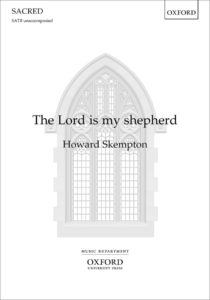
WILL TODD
SONGS OF PEACE [M]
SATB and piano (optional bass and drums)
Boosey & Hawkes BH12974 £11.99
THREE JAZZ HYMNS [M]
SATB and piano (optional jazz ensemble)
Boosey & Hawkes 979-0-13641-2 £4.25
Songs of Peace is a collection of six anthems that church choirs will probably sing on separate occasions, including during the ‘Kingdom season’ – especially the opening ‘Requiem’ movement and a final ‘light/stars/eternal’ text written by the composer. Other movements include an Ave verum corpus and an arrangement of two verses of ‘Just as I am’ with the expected tune Saffron Walden and a treatment that shows its origin as a jazz piano solo. Choirs and congregations that like sacred jazz fusions will find much to enjoy.
The same applies to Three Jazz Hymns. ‘Come down, O Love divine’ submits Down Ampney to a ‘gentle rhythmic groove’ growing verse by verse from one to two to four parts, and a more elaborate final verse. Blaenwern (with ‘God is love’ or ‘Love divine’) has a bass-heavy drive and a final verse shift up a semitone that feels at home here. Finally Picardy and ‘Let all mortal flesh keep silence’, where in verse 3 the ‘powers of hell’ let rip and in verse 4 the final ‘Alleluia, Lord most high’ is given a full Gospel treatment.
Stephen Patterson
ORGAN MUSIC
E Easy
M Medium
D Difficult
MIXED ANTHOLOGIES
ORGAN ENCORES VOLUME 5 [M–M/D]
transcribed by Ian Tracey
Church Organ World Publications COW-2020-009 £20
The fifth volume of organ encores features arrangements of works by Rameau, Handel, J.S. Bach, Grieg, Ponchielli and John Stanley, some well known, some less familiar. Ian Tracey continues the tradition of arranging orchestral and instrumental music from his illustrious predecessor in Liverpool, W.T. Best. While there are some tricky moments, the majority of the album would be accessible to those with a solid technique. As with previous volumes in this series, these works are well suited for recital programmes, or as pre/post-service organ voluntaries.
AN OXFORDSHIRE ORGAN BOOK [E–D]
ed. Malcolm Pearce
Oxford and District Organists’ Association (ODOA) 978-0-906894-70-5 £12.50
An Oxfordshire Organ Book presents 15 previously unpublished pieces embracing a spread of musical styles, composed by ODOA members and other associates of John Brennan, marking his retirement after 35 years as president of the Association. Most call for two manuals and pedals, with some for manuals only and a study for pedals alone. This attractive and varied collection will appeal to players of all tastes and standards, for use in service and recital, for teaching and for pure enjoyment. With a foreword by Thomas Trotter, the volume is also graced by examples of the dedicatee’s elegant organ drawings and pipe-shade designs. It is a fine edition that is well worth exploring.
Richard Brasier
SINGLE COMPOSER VOLUMES
LIVRE D’ORGUE
Nicolas de Grigny
ed. David Ponsford
UT Orpheus (Universal Edition) HS280 £46.50
If anyone is well placed to provide a new scholarly edition of the Livre d’Orgue of Nicolas de Grigny (1672–1703), it is David Ponsford. His engagement with this repertoire is long and on-going through writing and recording. His introduction to this attractive volume covers details of the sources, registration and performance practice. Although he touches on notes inégales – arguably the most challenging and significant aspect of performance in this music – the reader is, unfortunately, referred to chapter 3 of his book on the subject.
The essential problem with de Grigny’s text is that the first edition of 1699 is clearly corrupt. Ponsford uses the two early 18th-century manuscript copies by Bach and Walther for comparison. While the editorial method is largely beyond reproach, caveat lector: there are occasions where alternative readings are supplied without notice in the text (the player has to refer to the 26-page critical commentary), on the grounds that the conjectural readings are ‘better for voice leading and harmony’. But with that proviso, this edition can be recommended wholeheartedly.
Warwick Cole
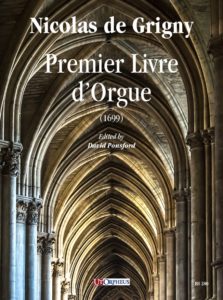
TWELVE INTRODUCTORY VOLUNTARIES OP.627 [E/M]
Carl Czerny
Fitzjohn Music Publications £9.00
Carl Czerny (1791–1857) is best remembered today as pupil of Beethoven and teacher of Liszt, and for his many piano exercises and studies. These 12 pieces are printed for the first time since their 1841 publication entitled 12 Introductory or Intermediate Voluntaries, that title showing that ‘Introductory’ refers to level of difficulty rather than to position in a service. These varied, tuneful pieces may (apart from No.12) be performed on manuals only, although David Patrick’s pedal suggestions make them easier to play. The British national anthem and the hymn tune that we call Austria make unexpected appearances.
Duncan Watkins
SIX PIECES FOR ORGAN [M–D]
Edward Bairstow
ed. David Patrick
Fitzjohn Music Publications £9.00
These six pieces by Edward Bairstow (1874–1946) – Meditation, Scherzo in A flat, Prelude in C, Evening Song, Legend in A flat and Nocturne in D flat – show the composer’s skill at composing effective miniatures. There is plenty of variety, and while the music is technically demanding and may be beyond the reach of some, this volume would make a fine addition to the music library of lovers of Bairstow’s music. The spiral-bound edition itself is well presented and lists the sources that were consulted during the editing process, all from the British Library.
24 EASY TRIOS THROUGH ALL 24 KEYS FOR THE ORGAN [E–M]
Christian Heinrich Rinck
ed. Christoph Dohr
Edition Dohr (Universal Edition) ED14201 £20.95
2020 marks the 250th anniversary of the birth of Christian Heinrich Rinck (1770–1846), a fascinating composer who could boast links to the baroque, classical and romantic periods. He composed in a wide variety of styles and for different abilities. In this handsome edition by Edition Dohr we find 24 trios that, like Bach’s Well-Tempered Clavier, take us through all 24 keys. The baroque trio model is used well, with effective writing in baroque, classical and romantic idioms. Though advertised as easy to play, they present different technical challenges and will certainly require concentrated work. Nevertheless, these compositions have real value and would be well placed in recital programmes or church services, or used for teaching.
CHORALE VARIATIONS ‘JESUS CHRISTUS, UNSER HEILAND’ [D]
Hugo Distler (New Edition of the Complete Organ Works, Vol. IV)
ed. Armin Schoof
Bärenreiter BA9234 £28.50
The fourth volume of Bärenreiter’s survey of the organ works of Hugo Distler (1908–42) contains one work, a previously unpublished partita on ‘Jesus Christus, unser Heiland’. It is a fine example of the compositions that emerged from Germany and Austria in the 1930s. The baroque partita form has been adapted into three sections: Introduction and Choral; Acht Variationen; Ricercare. As well as the printed notation, there are facsimiles of the manuscript sketches and well-written programme notes about Distler’s life and compositions. This partita is challenging, and for performance only in the context of a recital. Despite the hefty price for what is essentially one piece, it is an interesting edition and a worthy addition to any music collection.
L’ORGANISTE VOLS. 1–3 [M–M/D]
César Franck
ed. Martin Böcker
Butz-Verlag BU2932, 2942, 2962 €16.00 each
During the years 1889–90, César Franck (1822–90) composed 59 short works for organ or harmonium entitled L’Organiste, set out over two staves. With the art of harmonium playing becoming more of a rarity, these pieces, if played (a rarity in itself), are more commonly heard in organ arrangements, of which these by Martin Böcker offer a practical solution for effective performance. Where appropriate, the bottom voice has been transferred to the pedals, and manual suggestions have been offered by the editor. Original dynamic markings have largely been retained. These pieces would work well as part of a recital programme, as service music, or as an aid for teaching sight-reading.
Richard Brasier
ORGAN WORKS 1907–1947 [M/D]
Rued Langgaard
Wilhelm Hansen WH33231 £24.99
Born in Copenhagen, Rued Langgaard (1893–1952) was a prolific composer of large-scale works. His Symphony No.1 was premiered by the Berlin Philharmonic in 1913 when he was still 19, yet he was never accepted by the Danish musical establishment, perhaps owing to a solitary temperament or to a musical language considered radical by his peers (though it now sounds conventionally, lushly late-romantic).
In recent years there has been growing recognition of the quality and drama of his compositions. This lavish volume contains colour facsimiles of his manuscripts and extended critical notes and essays, alongside seven large-scale solo works and four for organ and brass, ranging from his youth to his maturity when he was organist of Ribe Cathedral in Jutland. In Tenebras Exteriores (‘Buried in Hell’) from 1947 is the most extended, virtuosic and exciting: fans of Max Reger will enjoy this music.
Huw Morgan
DAVID BEDNALL
RHAPSODY [D]
978-0-19-353104-8 £8.25
WALTON’S PAEAN [M/D]
978-0-19-353105-5 £6.95
EVOCATION OF WELLS CATHEDRAL [M]
978-0-19-353102-4 £6.95
Oxford University Press
Three works by the excellent and prolific David Bednall are a welcome addition to the repertoire. Bednall draws his influence from a variety of composers – Messiaen, Langlais and particularly Howells – but has forged a musical personality all his own. An accomplished performer, he writes idiomatic music that suits the warm, spacious British cathedral sound.
Rhapsody (the earliest of the three, from 2010) is a substantial work that brings to mind the great Howells rhapsodies: flexible and eruptive, swinging from one mood to another swiftly, and with lush harmonies. Walton’s Paean (Paul, not William) is more neoclassical, with a punchy rhythmic vitality and pleasingly direct motifs. Evocation of Wells Cathedral is based on the plainsong of the great O antiphon ‘O Radix Jesse’, and evokes the cathedral’s Jesse Window. Intense, calm yet constantly moving, it builds to a sturdy, warm climax before subsiding to a distant, high repose. All three would make fine liturgical or recital pieces.
Huw Morgan
CHRISTOPHER MAXIM
PRELUDE AND FUGUE ON THE NAME OF DURUFLÉ [M/D]
PPM02013M £11.99
ELEVEN CHORALE PRELUDES [M]
PPM02001M £20.99
THREE PIECES FOUNDED ON WELSH HYMN TUNES [M]
PPM1903M £12.99
JUBILATE [M/D]
PPM1905M £8.99
Paraclete Press (RSCM)
This clutch of works from Paraclete Press showcases Christopher Maxim’s fluent and charming compositional style. His North Walian heritage inevitably draws comparison with William Mathias: certainly there is the same Celtic brightness but it is softer-edged, more approachable and even jaunty.
Prelude and Fugue on the name of Duruflé mirrors Duruflé’s own sur le nom d’Alain in scale, mood and motif; the Eleven Chorale Preludes, all on German melodies, allude to Brahms’s Op.122 in texture, gesture and scale. Of these, the gentle, chromatic setting of ‘Wenn wir in höchsten Nöten sein’ is particularly intense and affecting. The title of Three Pieces Founded on Welsh Hymn Tunes seems a nod to Vaughan Williams, though the mood is lighter and more silvery. Jubilate has none of the granitic insistence or blinding sunlight of Mathias’s composition of the same name, but instead is an engaging and bouncy ball of fun. There is idiomatic, enjoyable and satisfying music in these volumes.
Huw Morgan
INDIVIDUAL VOLUNTARIES
ADVENT SUITE NO. 1 [E–M]
Pietro Yon
ed. David Patrick
Fitzjohn Music Publications £8.00
The Italian composer Pietro Yon (1886–1943) is known almost exclusively for his Toccatina for the flutes; it is refreshing to see an alternative offering from his hand. The Advent Suite has five movements, each taking musical themes from the Advent season: Prelude ‘Rorate Coeli’; Introit ‘Veni Emmanuel’; Offertory ‘Veni Domine’; Communion ‘Ave Maria’; Toccata ‘Creator alme siderum’. The music is pleasant, and rather tuneful in places. The movements could be played individually as organ voluntaries, or as a suite within a recital. Editorial notes offer a short biography of the composer and brief information on the sources and editorial procedure. The volume deserves investigation from those who enjoy exploring lesser-known repertoire.
Richard Brasier
THE TREES UNFOLD [M]
Judith Weir
Chester Music CH88055 £6.99
A new organ work by Judith Weir, Master of the Queen’s Music, is always noteworthy: The Trees Unfold, composed for the Edinburgh organist Philip Sawyer, is fresh, approachable and limpid. A short series of triads and open fifths expands and unfurls into a complex and gracious structure, the empty spaces of the opening motif filling and broadening to a generous climax. Technically not too challenging (though one or two passages in high registers might challenge some instruments), this lovely piece will delight performers and audiences, and find its way into my repertoire as soon as circumstances allow.
ST ALBANS TRIPTYCH [D]
Matthew Martin
Novello NOV100454 £10.99
Matthew Martin’s music is characterized by dark, intense harmonies, rhythmic vitality and a command of complex polyphonic writing. These elements are vividly present in this, the latest in a long line of fine commissions by the St Albans International Organ Festival. Martin describes the outer movements as having a ‘sharp-edged Neoclassical feel’, and the central Lamento (a welcome moment of calm) as being of the ‘Romantic French Fonds d’orgue soundworld’. Performers need a rock-steady technique, but the rewards of careful study will be immense. The composer’s mighty performance of this work at Gloucester Cathedral is worth seeking out on YouTube.
APOLLO [M/D]
James Whitbourn
Oxford 978-0-19-353241-0 £8.75
Apollo was first performed in 2019 at the Space City New Music Festival in Houston, Texas. It draws together the first known notated music, a hymn to Apollo by Athénaios (written around 128 BC), with a programmatic depiction of the 1968 Apollo mission, complete with an ignition sequence, lift-off, Earthrise and a final paean. If its sectional nature feels a little incoherent and the list of inspirations is over-complex, the music, in a minimalist style reminiscent of John Adams or Stephen Montague, is exciting and the work is topical: a good choice for those seeking unusual repertoire.
Huw Morgan
TOCCATA [M/D]
Georgi Mushel
Oxford 978-0-19-375601-4 £7.95
TOCCATA IN SEVEN [M]
John Rutter
Oxford 978-0-19-337270-2 £7.95
PROCESSIONAL [M]
William Mathias
Oxford 978-0-19-336913-9 £7.75
OUP’s ‘Oxford Organ Library’ includes these three reissues of original compositions previously hidden within anthologies. Mathias’s Processional is deservedly popular and was easy to find in A Mathias Organ Album. Particularly welcome is John Rutter’s Toccata in Seven, an attractive 7/8 toccata that was the least easy of the pieces in A Second Easy Album for Organ. Toccata by Georgi Mushel (1909–89) is reprinted in a version by Noel Rawsthorne that has more editorial intervention than just the acknowledged ‘suggested registration’. Mushel was a pianist rather than organist, and some reinterpretation of his score is desirable, but players should look at the Russian Musyka publication of Uzbekistan Suite (of which it is the third movement) or the version in Peters Edition’s Soviet Organ Music to see the octave transpositions, articulation and dynamic changes as well as registrations.
Julian Elloway
Reviews of CDs, DVDs and Books
Organ CDs
*
EXULTEMUS
Simon Pearce plays the organ of St Davids Cathedral · Priory PRCD1222
This recital of Welsh music by the assistant organist at St Davids has at its centre a fine performance of William Mathias’s Antiphonies of 1982, clearer and with more impact than John Scott’s St Paul’s Cathedral recording for Nimbus. There is also music by Sir Nicholas Jackson (a former St Davids organist), Cyril Jenkins and Meirion Wynn Jones, and two pieces by Geraint Lewis including The Minster Rings that features the cathedral bells as well as organ. The tracks not by a Welsh composer are Ralph Vaughan Williams’s Three Preludes founded on Welsh Hymn Tunes, including the much-played ‘Rhosymedre’ approached in a fresh and sensitive way.
Duncan Watkins
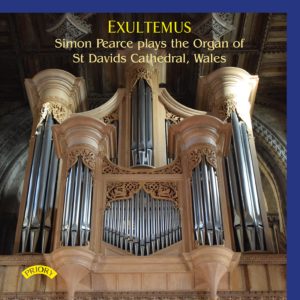
**
JAN PIETERSZOON SWEELINCK: ORGAN WORKS
James Lancelot plays the organ of Trinity College, Cambridge · Priory PRCD1228
James Lancelot may not be a name immediately associated with 16th- and early 17th-century keyboard music, but, as he writes eloquently in his liner notes, this disc is born of a life-long appreciation of Sweelinck (1562–1621), and a desire to remedy the neglect of his organ repertoire.
The performances are thoughtful and well considered. Lancelot is no Koopman, and if at times they lack the freedom and invention of some continental exponents – it is hard to imagine that the ‘Orpheus of Amsterdam’ would have played his music exactly as it is transmitted to us – they are nevertheless absolutely faithful to the text. The music is at its most attractive in the variations – no Mein junges Leben, but a well-chosen selection – and in the Echo Fantasias. All are judiciously registered. In short, this recording is a worthy advocacy of Sweelinck’s organ music.
Warwick Cole
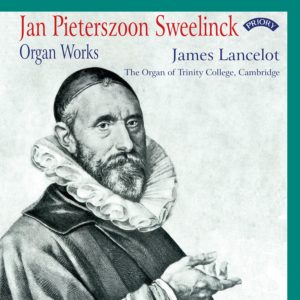
*
LIVE WIRE: ORGAN MUSIC BY IAIN FARRINGTON
played on the organ of St John’s College, Cambridge · Priory PRCD1218
If you like your organ music loud, wild and bombastic then this is the CD for you. Iain Farrington is let loose on the St John’s organ in a programme of his own compositions and arrangements. There is no denying that he is an exceptionally skilled organist and composer. From the opening Live Wire to the closing Lay my burden down – a selection of five Negro Spirituals – the listener is treated to a dazzling display of organ wizardry and colours. However, for me it is just too much. The majority of the pieces on this disc are exceptionally loud and played extremely fast, with harmonic detail, intricate textures and musical expression lost in a sea of notes. There are moments of serenity, such as the Nocturne movement from Fiesta!, but they are short-lived.
Ian Munro
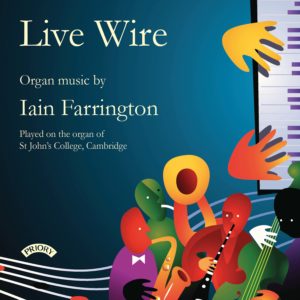
**
SIGFRID’S UNBEATEN TRACKS
Graham Barber plays Karg-Elert on the Link/Gaida organ of St Pauluskirche, Ulm · Fugue State Records FSRCD016
Thanks to crowd funding, Graham Barber explores lesser-known output of Sigfrid Karg-Elert (1877–1933) with transcriptions of six of the musical Portraits Op.101 and a Second Sonata Op.46, both originally written for harmonium, and recorded in the Pauluskirche in Ulm, Germany, on what is described as one of the best instruments for the high Romantic period. Barber uses plenty of instrumental colour for each of the witty and stylistic sketches of composers such as Chopin, Wagner and Verdi. Clearly Karg-Elert was a great musical mimic! Even a nod to B-A-C-H at the opening of the Second Sonata (given its premiere organ recording) is redolent of the opening of the Liszt’s working of the motif. Karg-Elert fans can enjoy the composer at his virtuosic, chromatic best.
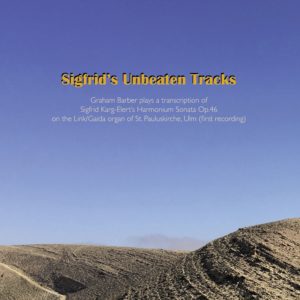
***
MAURICE DURUFLÉ: THE COMPLETE ORGAN WORKS
Francesca Massey plays the organ of Durham Cathedral · Priory PRCD 1230
Francesca Massey makes Durham Cathedral rock in this outstanding collection, recorded there during her time as sub-organist. Even though Duruflé (1902–86) played a large instrument at St-Étienne-du-Mont in the Parisian Latin Quarter, he would surely have delighted at the comprehensiveness of the Durham monster (and its imposing setting): a four-manual instrument with a bright Positive and a Bombarde section thoughtfully positioned behind the Dean’s stall. Yet the instrumental couleurs demanded by Duruflé are faithfully reproduced.
All those hallmark masterworks are here – the ‘Soissons’ Fugue, the ‘Veni Creator’ Suite, the Prelude and Fugue on the Alain motif, et enfin the Suite Op.5 with its fiendish Toccata! Duruflé’s writing is imbued with a modal plainsong wistfulness but there are a lot of notes to get fingers around. Furthermore, a balletic facility is called for, not least in the Scherzo Op.2. Francesca Massey carries all this off with considerable ease: ‘Magnifique pet’, as they would say in Durham.
Stuart Robinson
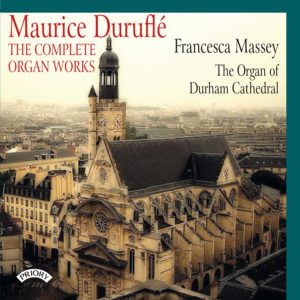
**
THE COMPLETE ORGAN WORKS OF SIR WILLIAM HARRIS
Daniel Cook plays the organ of Durham Cathedral · 2CDs Priory PRCD1187
Daniel Cook gives us the complete organ music of William Harris (1883–1973) with nearly 160 minutes over 42 tracks on two CDs. The music ranges from the 1899 Andante in D to the 1973 Prelude in G and includes 11 unpublished works. The substantial multi-movement work is the Sonata in A minor of 1938, which may show why the composer was wise to concentrate on writing miniatures. However, there are two eight-minute Fantasies, ‘on an English folk tune’ (Monks Gate) and ‘on Campion’s tune “Babylon’s Streams”’ that conclude each CD and show a high level of musical invention, and the popular Improvisation on the Old 124th. But it is the small-scale works that take up most of the tracks – with considerably more variety than I had anticipated, partly enhanced by Daniel Cook’s mastery of the resources of the huge instrument.
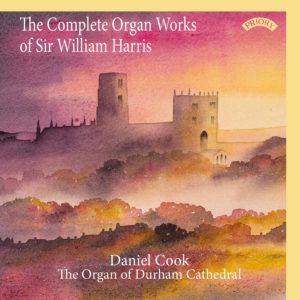
**
CANADIAN ORGAN MUSIC
Rachel Mahon plays the organ of Coventry Cathedral · Delphian DCD34234
Healey Willan (1880–1968), born in England but resident in Canada, came to Coventry in 1952 with a cheque from the Royal Canadian College of Organists towards the cost of an organ for the planned new cathedral. Rachel Mahon, born in Canada but now organist of Coventry Cathedral, appropriately opens her first organ CD with Willan’s Introduction, Passacaglia and Fugue – and shows how her technique (and virtuosity) transcends its difficulties. Other Canadian works on this enjoyable disc are French influenced, with a Petite Suite by Gerald Bales, Chromatic Partita by Ruth Watson Henderson with subtle colourings in its eight variations and Rachel Laurin’s Symphony No.1, an updating of the French organ symphony tradition. The recording captures the wide dynamic range and makes one feel present in the building.
Judith Markwith
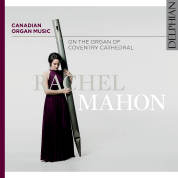
CHORAL CDs
**
OUR FATHER IN THE HEAVENS
Anthems by Sir Edward Bairstow · Tewkesbury Abbey Schola Cantorum / Carleton Etherington (organ) / Simon Bell · Regent REGCD543
This excellent collection of anthems by Edward Bairstow (1874–1946) comes from the choir of boys and men which, in normal times, sings weekday choral evensongs in Tewkesbury Abbey. There are some old favourites, such as Blessed city and Save us, O Lord. The CD title comes from what is claimed to be a first recording of Our Father in the heavens – an unaccompanied setting of a metrical version of the Lord’s Prayer. It’s a tricky number, but sung here with accuracy and confidence. Another first recording is claimed for Of the Father’s love begotten, described as Bairstow’s earliest essay in the hymn-anthem genre. Simon Bell has cultivated an admirable ensemble and blend – with thoughtful and colourful accompaniments from Carleton Etherington.
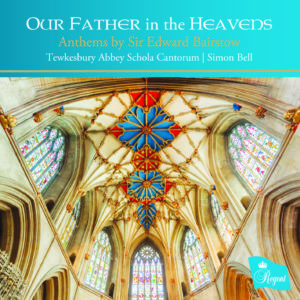
***
PARRY: SONGS OF FAREWELL
and works by Stanford, Gray and Wood · Choir of Westminster Abbey, James O’Donnell · Hyperion CDA68301
This is a splendid release of unaccompanied choral works from four favourite composers spanning the late 19th and early 20th centuries. Stanford’s beautifully crafted Three Motets give way to Alan Gray’s lush evening canticles in F minor. In fact this CD is a study in Edwardian/Georgian lushness – Stanford’s eight-part Magnificat and the Charles Wood’s lesser known Nunc dimittis in B flat are splendidly performed and cleanly recorded in All Hallows, Gospel Oak in north London. Programme notes by Professor Jeremy Dibble describe the friendly – turned protracted – relationship between Parry and Stanford. Dibble explains the context of the writing of each piece, along with the connections between the four composers, whether as pupil or colleague.
With Parry’s Songs of farewell, the best is left to last. Under James O’Donnell the sense of these reflective texts and music is heard in the singers’ collective bloodstream, through to the closing words ‘that I may recover my strength before I go hence and be no more seen.’
Stuart Robinson
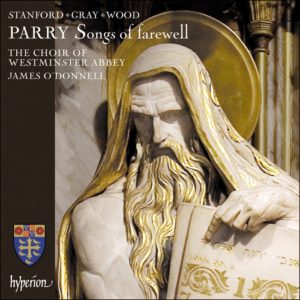
***
BAIRSTOW, HARRIS & STANFORD
Choir of Westminster Abbey / Peter Holder (organ) / James O’Donnell · Hyperion CDA68259
A splendid selection of music from three near contemporaries, Bairstow, Harris and Stanford, performed magnificently by the choir of Westminster Abbey directed by James O’ Donnell and accompanied by Peter Holder! Bairstow’s Blessed city, heavenly Salem sets the listener up for a treat. This is a beautifully recorded disc of introits and anthems by three favourite composers, showing the Abbey choir at the peak of its powers. Diction is crisp, clear and precise: even in the faster middle section of Harris’s Strengthen ye the weak hands, not a word (or note) is lost. It is lovely to hear the young treble voices featured in Stanford’s A Song of Wisdom. The balance within the voices and between voices and organ is perfect throughout, tempi are consistently well chosen and the music has space to breathe. This recording is an absolute must have!
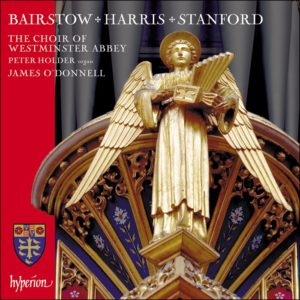
***
EVENSONG LIVE 2019
Anthems and Canticles · Choir of King’s College Cambridge / Stephen Cleobury · King’s College KGS0038
Evensong Live 2019 is not a recording of evensong but a thoughtful selection of anthems and canticles from the final year of Cleobury’s tenure as director of music at King’s. From the first choral entry of Parry’s I was glad, the unmistakable King’s College sound is there. Close your eyes while listening to any track on this CD and you can picture the beautiful chapel. The music ranges from Byrd and Weelkes to Parry, Finzi and Judith Weir. Everything is so beautifully sung and the organ accompaniments so sensitive! A couple of the tempi may be slightly slow; however, Cleobury knows his acoustic and allows all the intricate textures to be heard: not a note is missed. A couple of the male soloists sound a little distant, which is a shame. This a wonderful tribute to the late Sir Stephen Cleobury.
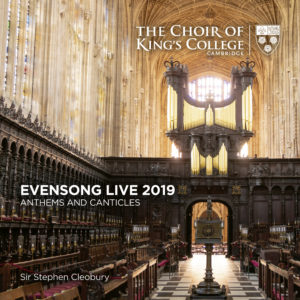
**
FADING
Music for Compline · The Gesualdo Six / Owain Park · Hyperion CDA68285
This is a delightful programme of music from the 12th century to the present day, performed by the Gesualdo Six under Owain Park. The young singers present an album of mature performances, showcasing their versatility in repertoire ranging from the complex renaissance polyphony of Tallis, Gesualdo and Byrd to present-day Joanna Marsh and Owain Park himself. Exploring the music of compline and the ‘light into darkness’ theme, these performances are close to perfection: clear, crisp diction, an impressive dynamic range and superb vocal blending. Yet, at times I feel the inner parts are slightly lost with overpowering treble and bass. In some pieces, particularly Byrd’s Lullaby ‘My sweet little baby’, the slow speed helps bring out the intricate textures but the music feels slightly stodgy. Nevertheless, this is a masterclass in fine ensemble singing.
Ian Munro
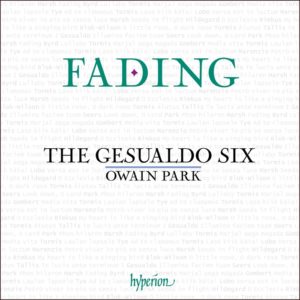
*
HUGH BENHAM: SACRED CHORAL MUSIC
Convivium Singers / Malcolm Archer (organ) / Alexander Norman · Convivium CR050
There is a wide range of music here, some conceived for smaller church choirs and some on a bigger scale. Hugh Benham may be best known to CMQ readers for his work on Tudor church music and in particular John Taverner, but he is also a proficient composer with a gift for setting familiar words in ways that shed new light on the texts. He obviously loves the language of well-known hymns and prayers (such as ‘Glorious things of thee are spoken’ and ‘Teach me, my God and King’ in English, or in Latin ‘Ubi caritas’ and ‘Ave Maria’), and envelops them in well-judged choral textures. In addition there are carols, a Mass setting, an evening service, three organ pieces and more – the 19 pieces include something for everyone.
Judith Markwith
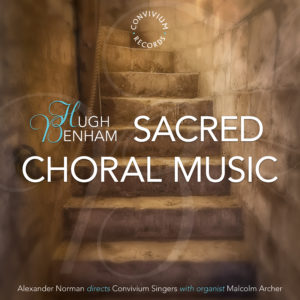
Books
ECHOES OF A DISTANT MUSIC: A LIFE OF RONALD LEE MBE
John Crothers 978-1-5272-5176-2 available from www.thebookwell.co.uk £15.00
Ronald Lee (1929–92) was one of the most significant figures in Irish choral and church music. He made an annual pilgrimage to King’s College, Cambridge and was once fortunate to conduct his school choir there – King’s inspired the sound he wished his choirs to produce and his choral repertoire throughout his life. This well-researched, beautifully presented book by John Crothers includes contributions from Barry Douglas, Yan Pascal Tortelier, David Willcocks, Stephen Cleobury and John Rutter. The calibre of these contributors and Crothers’s own moving account of the life of this inspiring, well-respected man makes the reader aware of what a significant musician Ronald Lee was. Containing several moving tributes to the most modest of men, and detailing the experiences he gave his choirs and congregations, this is a poignant and inspiring read.
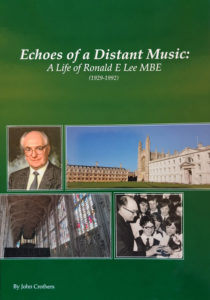
PALESTRINA FOR ALL: UNWRAPPING, SINGING, CELEBRATING
Jonathan Boswell 978-1-72196895-4 available from Amazon £6.23
The enthusiasm Jonathan Boswell has for Palestrina is evident throughout: Palestrina for All is a sincere and informed appreciation. As a listening guide or for those looking to become more familiar with Palestrina’s output there is plenty of inspiration. The little biographical or historical information we are given is fascinating; it is a shame that there isn’t more. Those seeking musical analysis, or a more scholarly appreciation of Palestrina’s compositional output, will be disappointed by the lack of musical examples, let alone annotated ones, which would have enforced and more clearly demonstrated Boswell’s appreciation. The few that appear are rarely annotated and the edition, publisher and source of the manuscript go uncredited. The quality of the binding is worrying – several pages of my copy came loose.
Ian Munro
BUXTEHUDE STUDIES VOL. 3
ed. Matthias Schneider and Jürgen Heering
Butz Verlag: 195pp. P/B 978-3-928412-28-5 €23.00
The third volume of Buxtehude-Studien issued by the International Dieterich Buxtehude Gesellschaft presents papers delivered at annual conferences in 2017 and 2018. For those interested in the latest research into Buxtehude’s music this is a thought-provoking collection; but with only one paper in English, readers need to be fluent in German.
In a fascinating account of ‘Lübeck’s sacred treasures: new light on the 17th-century repertory of St Mary’s church’, Kerala J Snyder explores the connections between the Düben collection and the archive of printed and manuscript music built up by Tunder and Buxtehude. Elsewhere, Peter Dirksen addresses the issue of the young Bach’s engagement with Buxtehude’s keyboard music; Ton Koopman provides a wide-ranging discussion of the instruction ‘con discrezione’; and Friedemann Hellwig provides an illuminating account of Buxtehude’s instrumentation in connection with surviving Lübeck-made instruments of the period. In short, it is an informative volume for the determined Buxtehude enthusiast.
Warwick Cole
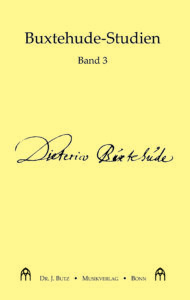
SARUM CHANT: PLAINSONG OF THE ENGLISH CHURCH
Philip Baxter
Sarum Script: 102pp. P/B 978-0-9523959-2-8 £8.00
This general introduction to plainsong aims to broaden its appeal, because plainsong’s ‘monophonic simplicity makes it so appropriate for a wide breadth of congregations even with limited musical resources’. The central chapters cover modes, notation, office hymns, psalmody and antiphons, and music for the Eucharist. Inevitably much is summarized, but always with the benefit of the author’s clear writing style – you feel that he is taking you on one side as he personally explains the subject.
A useful initial chapter covers the history and development of plainchant, and a final chapter explores translation and modern usage. An appendix includes the tones of the psalm chants and the examples of their accompaniment from Arnold’s Plainsong Accompaniment, although the author makes clear his disapproval of accompaniment in general, and in particular of those examples that include notes ‘outside the mode’. In so far as it is possible to compress so large a subject into so little space (and include a generous number of examples and illustrations), this book should be commended.
THE SOUND OF LIFE’S UNSPEAKABLE BEAUTY
Martin Schleske
Eerdmans (SPCK): 384pp. H/B 978-0-8028-7614-0 £19.95
Schleske is a German violin maker and writer for whom the process of handcrafting a violin is paralleled in finding God as he describes choosing the perfect piece of wood, working on it and shaping, varnishing and polishing it. But this exquisitely produced book is much broader. Each chapter is prefaced by a quote from scripture and a photograph by Donata Wenders. Translated by Janet Gesme, the text encourages us to pay attention to the ways in which we experience God in the world – and not least in music, for ‘in the final analysis, music is prayer cast into sound’. As Makoto Fujimura writes in a Foreword, ‘This beautiful book echoes that song of God that all of us will face and hear one day.’ It is a book that can be read in different sections – the author describes it as a collection of little books – but however it is done, it is well worth reading.
Julian Elloway
